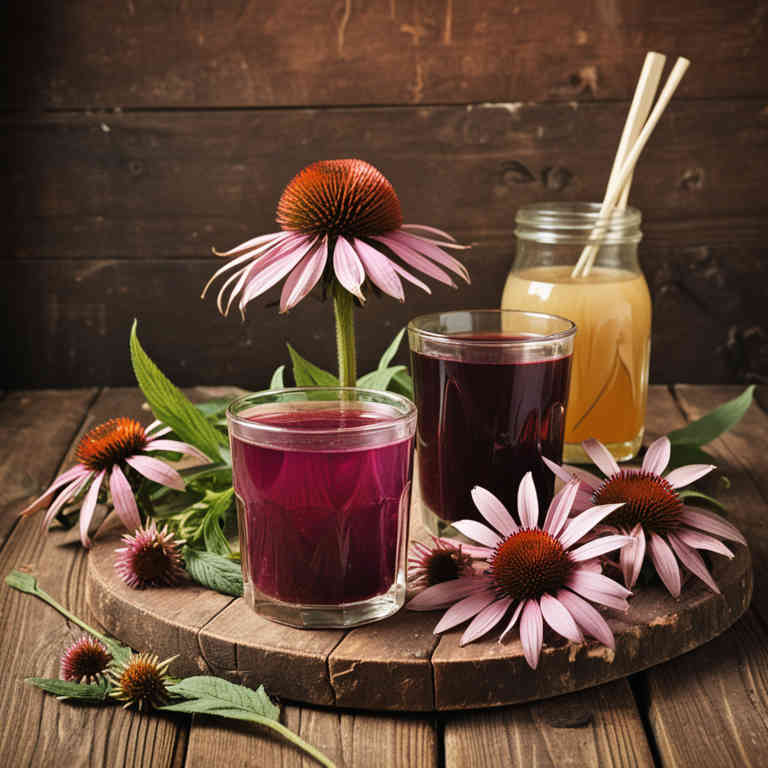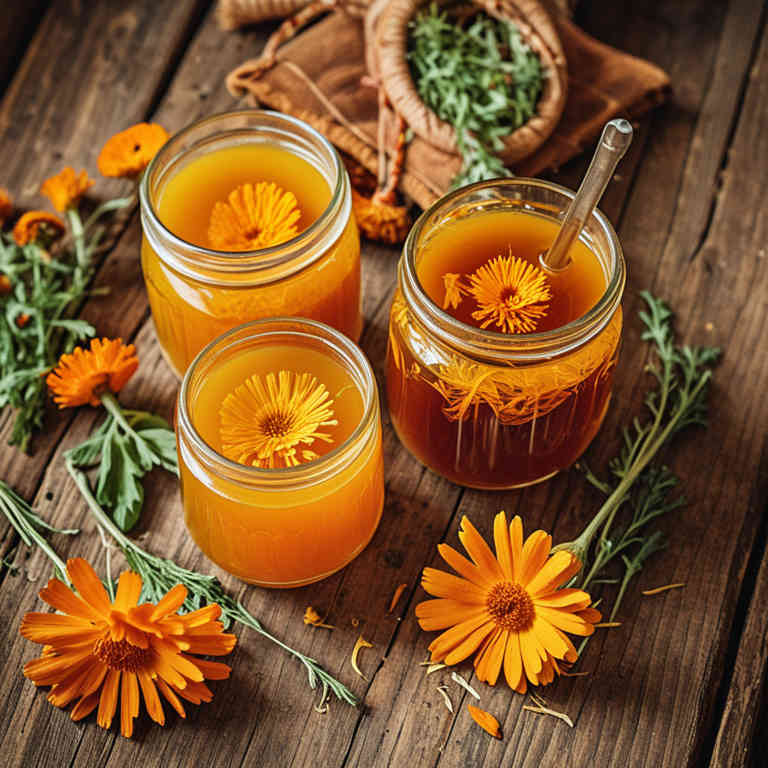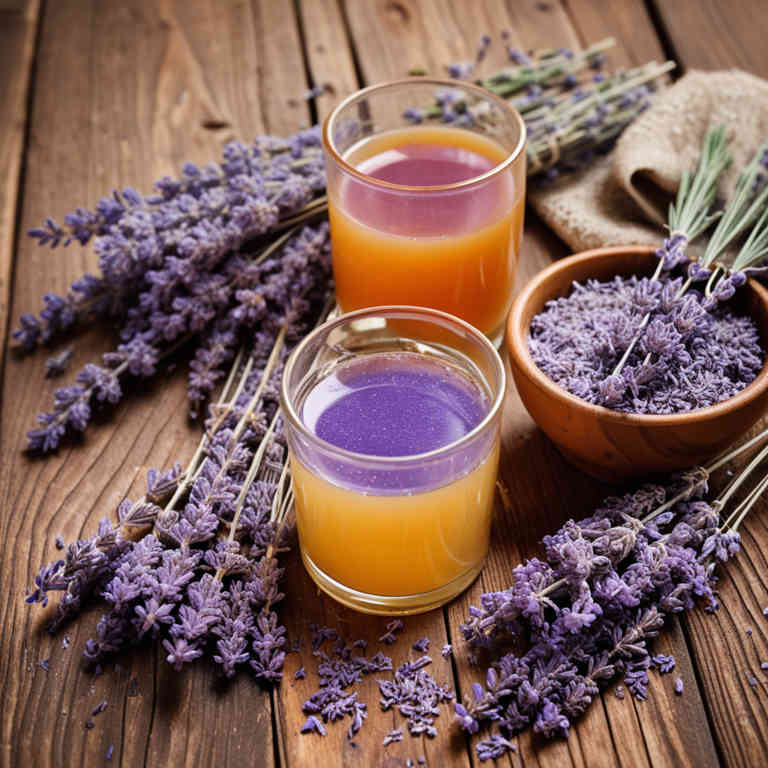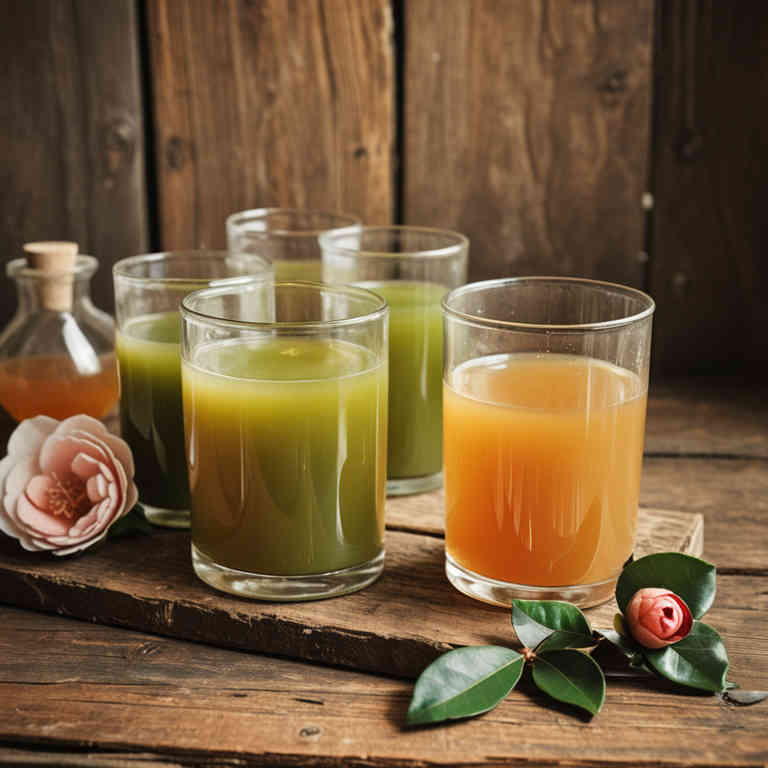10 Best Herbal Juices For Fever Blister On Lip

Herbal juices can be a natural and soothing remedy for fever blisters on the lips, often containing antiviral and anti-inflammatory properties that may help reduce the severity and duration of the outbreak.
Juices made from ingredients like echinacea, calendula, and licorice root are commonly recommended for their ability to support the immune system and promote healing. To use, these juices can be applied topically with a clean swab or diluted with water to avoid irritation. While they may provide some relief, they are not a substitute for medical treatment, especially if the fever blister is severe or persistent.
It's important to consult a healthcare professional for proper diagnosis and treatment options.
FREE Herb Drying Checklist
How to make sure every batch retains maximum flavor, color, and aroma without the risk of mold or over-drying. Eliminate guesswork and trial-and-error, making herb drying faster, easier, and more efficient every time.
Table of Contents
1. Aloe barbadensis

Aloe barbadensis, commonly known as aloe vera, is often used in herbal remedies for its soothing and healing properties.
When applied topically, aloe vera juice can help reduce the pain and inflammation associated with fever blisters on the lips. Its antiviral and anti-inflammatory compounds may assist in accelerating the healing process and preventing further irritation. To use aloe vera for this purpose, it is recommended to apply pure, organic aloe gel directly to the affected area several times a day.
However, it is important to consult a healthcare professional before using aloe vera, especially if the blisters are severe or persistent.
2. Echinacea purpurea

Echinacea purpurea, commonly known as purple coneflower, is a popular herbal remedy often used to support immune function and reduce the duration of colds and viral infections.
While it is not a direct treatment for fever blisters on the lips, some people use echinacea-based herbal juices to potentially boost their immune system and aid in the healing process. These juices may help reduce the frequency and severity of outbreaks by enhancing the body's natural defenses against the herpes simplex virus. However, it is important to note that echinacea should not replace conventional medical treatments for fever blisters, and individuals should consult a healthcare provider before using it, especially if they have allergies or are taking other medications.
Overall, echinacea purpurea herbal juices can be a complementary option for managing fever blisters when used alongside proper hygiene and medical advice.
3. Calendula officinalis

Calendula officinalis, commonly known as pot marigold, is a flowering plant often used in herbal medicine for its anti-inflammatory and antiseptic properties.
Herbal juices made from calendula officinalis can be applied topically to fever blisters on the lips to help reduce redness, swelling, and discomfort. These juices contain compounds like flavonoids and triterpenoids that may promote healing and soothe irritated skin. While calendula is generally considered safe for topical use, it is important to perform a patch test to check for any allergic reactions.
For best results, calendula juice should be used as part of a holistic approach that includes proper hygiene and, if necessary, consultation with a healthcare professional.
4. Hypericum perforatum

Hypericum perforatum, commonly known as St. John's Wort, has been traditionally used for its potential anti-inflammatory and antiviral properties, making it a subject of interest for treating fever blisters on the lips.
While some studies suggest that its compounds may help reduce the duration and severity of cold sores, there is limited scientific evidence specifically supporting its use in herbal juices for this condition. Herbal juices made from Hypericum perforatum are often prepared by soaking the plant in water or alcohol, and may be applied topically to the affected area. However, it is important to note that St. John's Wort can interact with certain medications and should be used with caution, ideally under the guidance of a healthcare professional.
As with any herbal remedy, results may vary, and it is advisable to consult a medical expert before relying solely on hypericum perforatum for fever blister treatment.
5. Zingiber officinale

Zingiber officinale, commonly known as ginger, has been traditionally used for its medicinal properties, including its potential to alleviate symptoms of fever blisters on the lips.
Ginger contains bioactive compounds like gingerol and shogaol, which possess anti-inflammatory and antiviral properties that may help reduce the severity and duration of cold sores. When prepared as a herbal juice, ginger can be applied topically to the affected area to soothe irritation and promote healing. However, it is important to note that while some individuals may find relief from using ginger juice, it should not replace professional medical advice, especially for severe or persistent outbreaks.
As with any herbal remedy, it is advisable to consult a healthcare provider before use to ensure safety and effectiveness.
6. Lavandula angustifolia

Lavandula angustifolia, commonly known as English lavender, is often used in herbal remedies due to its calming and antiseptic properties.
When prepared as a herbal juice, it may offer soothing effects for fever blisters on the lips, which are typically caused by the herpes simplex virus. The essential oils in lavender, such as linalool and lavandic acid, have been studied for their potential anti-inflammatory and antiviral benefits. To use lavender juice for this purpose, it should be diluted with water or a carrier oil to avoid skin irritation.
While it may provide some relief, it is important to consult a healthcare professional for persistent or severe outbreaks.
7. Rosa canina

Rosa canina, also known as dog rose, is a traditional herbal remedy that has been used for centuries to support the body's natural healing processes.
Its juice, derived from the hips of the Rosa canina plant, contains high levels of vitamin C, antioxidants, and other bioactive compounds that may help reduce inflammation and boost the immune system. When applied topically, Rosa canina juice may provide soothing relief for fever blisters on the lips by promoting tissue repair and reducing irritation. Some individuals use it as a natural alternative to conventional treatments, though it is important to consult a healthcare provider before using it for persistent or severe outbreaks.
While preliminary studies suggest potential benefits, more research is needed to fully understand its efficacy in treating cold sores.
8. Camellia sinensis

Camellia sinensis, the plant from which green and black teas are derived, contains antioxidants and anti-inflammatory compounds that may help in reducing the symptoms of fever blisters on the lips.
While there is limited scientific evidence specifically supporting the use of Camellia sinensis herbal juices for cold sores, some studies suggest that its high concentration of polyphenols could potentially support the immune system and reduce viral replication. Applying a cooled infusion of Camellia sinensis may provide soothing relief and help alleviate discomfort associated with fever blisters. However, it is important to consult a healthcare professional before using any herbal remedy, especially for persistent or severe outbreaks.
Overall, while Camellia sinensis may offer some supportive benefits, it should not replace conventional treatments recommended by a dermatologist or healthcare provider.
9. Urtica dioica

Urtica dioica, commonly known as stinging nettle, has been traditionally used for its medicinal properties, including its potential benefits for skin conditions.
Some herbal practitioners suggest using stinging nettle juice to help alleviate symptoms of fever blisters on the lips due to its anti-inflammatory and antiviral properties. The juice is believed to soothe the affected area and promote healing by reducing redness and swelling. However, it is important to note that there is limited scientific research supporting its effectiveness for this specific use.
As with any herbal remedy, it is advisable to consult a healthcare professional before applying stinging nettle juice to a fever blister.
10. Vitex agnus-castus

Vitex agnus-castus, commonly known as chasteberry, has been traditionally used in herbal medicine for its potential anti-inflammatory and antiviral properties.
While it is not a direct treatment for fever blisters on the lips, some herbal practitioners suggest using vitex agnus-castus in the form of herbal juices to support immune function and reduce the frequency of outbreaks. These juices may help soothe the skin and promote healing by reducing inflammation and supporting the body's natural defenses. However, it is important to consult a healthcare professional before using any herbal remedy, especially for persistent or severe cold sores.
Combining vitex agnus-castus with other natural remedies, such as aloe vera or honey, may enhance its potential benefits for lip health.